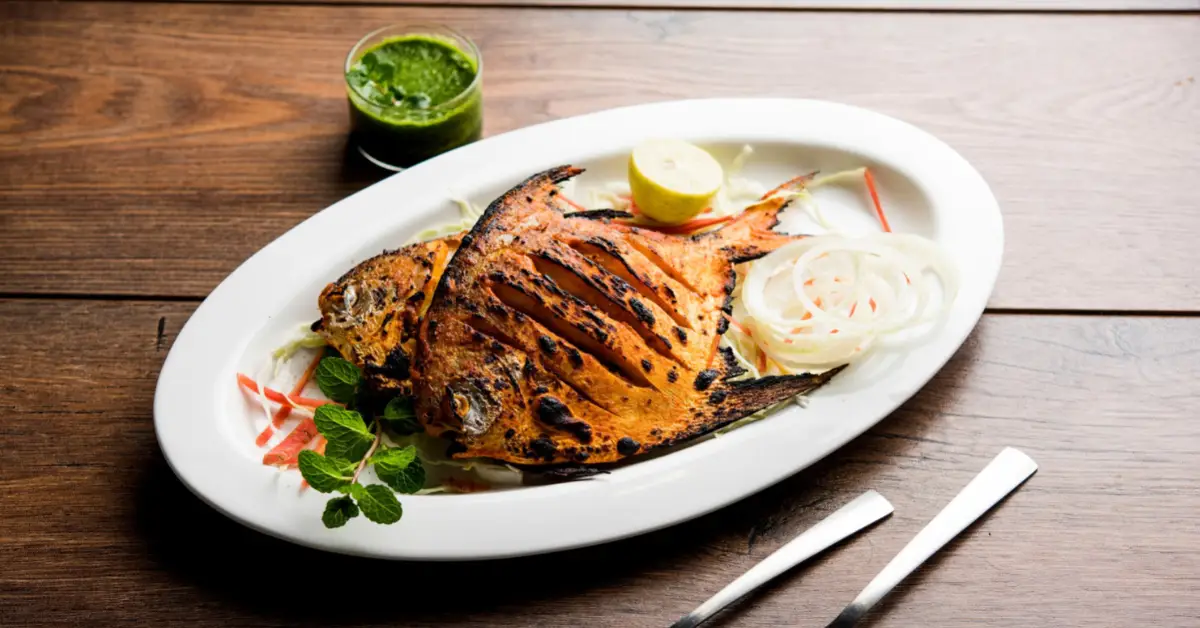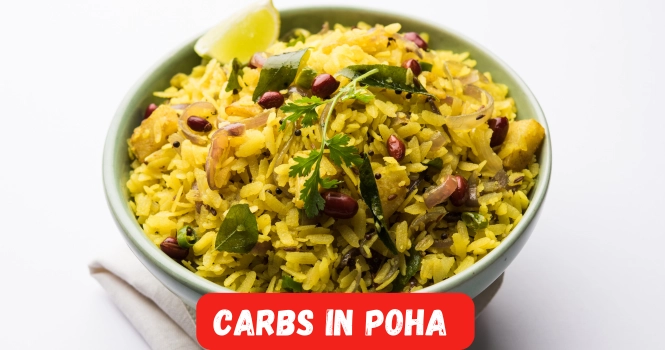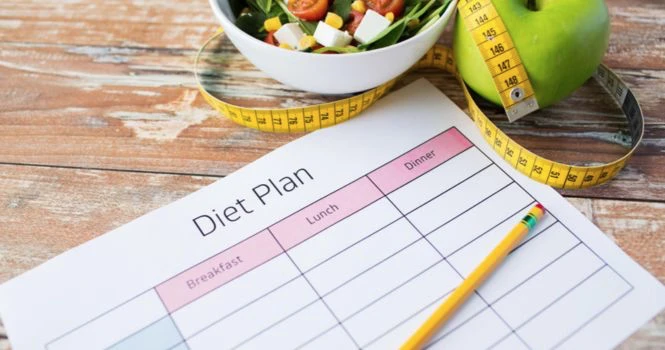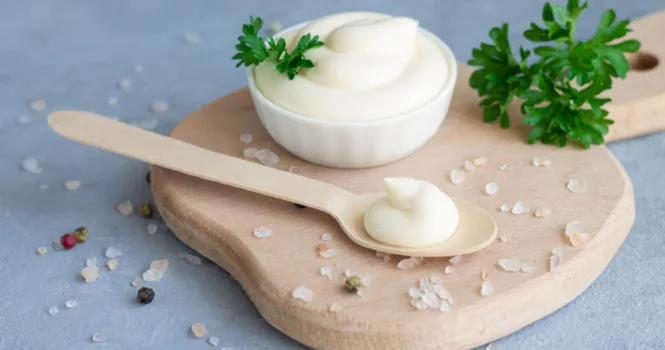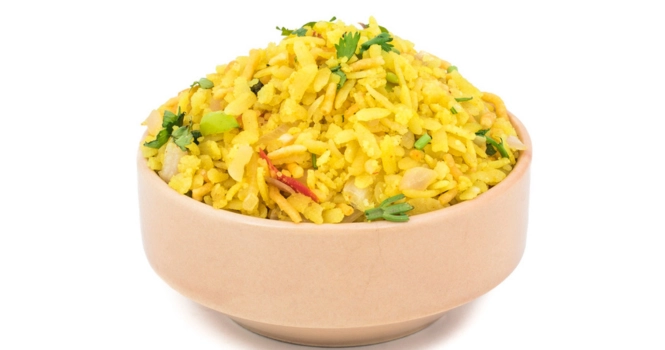Soya Chunks: A Comprehensive Guide to Their Health Benefits, Nutrition, and Culinary Uses
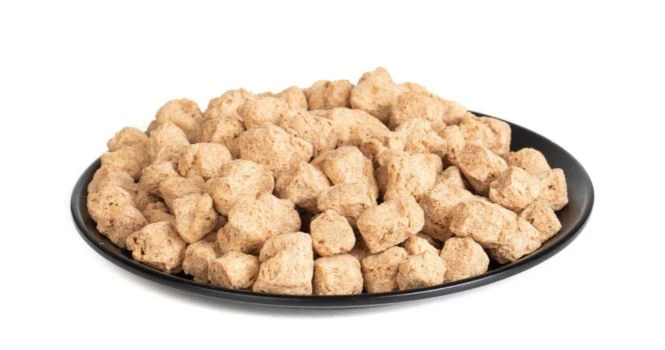
Dive into the world of soya chunks with our guide, exploring their health benefits, nutritional value, and culinary versatility. Ideal for fitness enthusiasts and home cooks alike, we’ll unveil the secrets of this protein-rich food, answering common questions and showcasing its diverse uses in everyday cooking.
What is Soya?
“Soya” is another term used to refer to soybeans or products derived from soybeans. Soybeans are a type of legume native to East Asia, widely grown for their edible bean which has numerous uses.
The soybean is high in protein and can be processed into a variety of products, including:
1. Soy Milk:
A beverage made from soybeans, often consumed as a replacement for dairy milk.
2. Tofu:
A food product made by coagulating soy milk and pressing the resulting curds.
3. Soy Sauce:
A liquid condiment made from fermented soybeans, usually used in Asian cuisine.
4. Soybean Oil:
An edible oil extracted from the soybean, used in cooking and in the production of processed foods and industrial products.
5. Tempeh:
A traditional Indonesian product made by fermenting whole soybeans.
6. Soy Protein:
Extracted from soybeans, it’s used as a meat substitute and supplement.
Soybeans are also used in the production of a variety of non-food products, including biodiesel, plastics, and cosmetics.
Additionally, they are a significant source of animal feed due to their high protein content.

Are Soya and Soy the same?
Yes, “soya” and “soy” refer to the same thing. Both terms are used to refer to the soybean, a species of legume.
In American English, “soy” is more commonly used, while “soya” is more frequently used in British English.
Regardless, both terms refer to the same plant and the various food and industrial products derived from it, such as soy milk, tofu, soy sauce, and more.
What are Soya Chunks?

Soya chunks, also known as textured vegetable protein (TVP), soya nuggets, or textured soy protein (TSP), are a defatted soy flour product.
It’s a by-product of extracting soybean oil, often used as a meat substitute.
Here’s a basic rundown of the process of making soya chunks:
- Soybeans are harvested and cleaned.
- The beans are then cracked and their hulls are removed.
- The dehulled beans are then pressed, extracting the oil and leaving behind a cake-like substance.
- This soybean cake is then further processed, often through extrusion cooking, to produce the soya chunks.
This process involves forcing the soybean cake through a machine that heats and shapes the product into small, chunk-like pieces.
They are popular due to their high protein content. They contain all the essential amino acids needed by the human body, making them an excellent protein source, particularly for vegetarians and vegans. They’re also rich in vitamins, minerals, and insoluble fiber.
These chunks are often used in a variety of dishes, similar to how one might use meat. They’re flavor-neutral, so they easily absorb the flavors of the other ingredients they’re cooked with. They need to be rehydrated before cooking, usually by soaking them in hot water or broth.
Nutritional Information
The nutritional information for Dry Soya Chunks is different from the ones which are soaked in water.
It absorbs almost twice the amount of water and below is a tabular column, which mentions both Dry and Dehydrated Nutritional Information for 100g of Soya Chunks.
100 grams of Soya Chunks
| Nutrient | Amount (Dry) | Amount (Rehydrated) |
| Calories | 336 kcal | 112 kcal |
| Total Fat | 0.4 g | 0.13 g |
| Saturated Fat | 0.1 g | 0.03 g |
| Cholesterol | 0 mg | 0 mg |
| Sodium | 10 mg | 3.3 mg |
| Total Carbohydrate | 33.5 g | 11.16 g |
| Dietary Fiber | 13 g | 4.3 g |
| Sugars | 8 g | 2.66 g |
| Protein | 52.4 g | 17.47 g |
| Calcium | 350 mg | 116.6 mg |
| Iron | 10.4 mg | 3.47 mg |
Difference Between Soya Chunks Vs Soya Beans
Soya chunks (also known as texturized vegetable protein or TVP) and soya beans are both derived from the soy plant, but they are processed and used differently.
1. Soya Chunks:
- These are made from defatted soy flour that’s been processed into a dense, meat-like texture. They’re often used as a meat substitute because of their high protein content and chewy texture.
- They are highly versatile and can be used in a variety of dishes, such as curries, stir-fries, and salads. They need to be rehydrated before use, typically by soaking in hot water.
- Nutritionally, they are a great source of protein, providing around 50-55 grams per 100g in their dry state. They also contain a good amount of dietary fiber, iron, and magnesium.
2. Soya Beans:
- These are the raw, unprocessed seeds of the soy plant. They can be used in many forms, such as edamame (young, green soybeans), roasted soy nuts, and soy milk.
- They’re also the base for fermented soy products like tempeh, miso, and soy sauce.
- Nutritionally, soybeans are also high in protein, with raw soybeans providing around 36-40 grams per 100g. They are also a good source of dietary fiber, vitamins, and minerals like iron and magnesium.
While both soya chunks and soya beans are nutritionally dense and versatile ingredients, they serve different culinary purposes.
Soya chunks are primarily used as a meat substitute, while soya beans can be used in a broader range of dishes, including as a whole food in themselves (like edamame), in processed forms (like tofu), or in fermented products (like tempeh and miso).
Both can be included in a healthy diet, especially for those seeking plant-based protein sources.
Is there a Difference In Protein Content Between Raw, Soaked, Boiled and Cooked Soya Chunks?
Yes, the protein content of soy products can change depending on their preparation.
Raw:
The protein content in raw soya chunks is high. A 100g serving of raw soya chunks can contain up to 50-55 grams of protein.
Soaked:
When soya chunks are soaked in water, they absorb the water and increase in size, but the protein content remains roughly the same.
Just because the volume of the chunks increases, the protein concentration (grams of protein per 100g) decreases. Thus, a 100g serving of soaked soya chunks would have less protein compared to the raw form.
Boiled:
The protein content decreases slightly during boiling due to some protein being lost in the water. On average, a 100g serving of boiled soya chunks might contain around 15-20 grams of protein.
Cooked:
Cooking soya chunks (for example, frying or baking) might further reduce the protein content due to heat-induced denaturation.
The decrease is generally not significant, and cooked soya chunks remain a rich source of protein.
Health Benefits
They, also known as textured vegetable protein, offer numerous health benefits due to their nutritional profile. Here are some of the primary health benefits associated with incorporating soya chunks into your diet:
1. High in Protein:
They are rich in protein, which is vital for the growth and repair of body tissues, including muscles and skin. They are often used as a protein source by vegetarians and vegans.
2. Rich in Vitamins and Minerals:
They are packed with various vitamins and minerals, including calcium, iron, and vitamin B. These nutrients are necessary for various bodily functions such as maintaining bone health, supporting the immune system, and ensuring proper functioning of cells.
3. Good Source of Fiber:
They contain a good amount of dietary fiber, which can aid digestion, help maintain a healthy weight, and lower the risk of developing chronic diseases like heart disease, type 2 diabetes, and certain types of cancer.
4. Heart Health:
They are low in saturated fat and contain no cholesterol, making them a heart-healthy choice. Additionally, they contain omega-3 fatty acids, which can help lower levels of harmful cholesterol and maintain heart health.
5. Energy Booster:
The carbohydrates in soya chunks provide a sustained energy release, helping to keep you energized throughout the day.
6. Menopausal Symptoms:
They contain isoflavones, a type of plant estrogen that can mimic the effects of natural estrogen in the body. This can help manage symptoms of menopause.
7. Bone Health:
They are a good source of calcium and vitamin D, both of which are essential for maintaining strong, healthy bones and preventing conditions like osteoporosis.
Despite these benefits, it’s important to consume soya chunks as part of a balanced diet and not rely on them as your only source of nutrition.
Some individuals may also experience soy allergies, and it’s also worth noting that there is ongoing research into the potential impacts of consuming large amounts of soy products, particularly concerning isoflavones and hormonal balance.
Always consult with a healthcare provider if you have concerns about incorporating a new food into your diet.
Who should avoid Soya Chunks?
While they are generally safe and healthy for most people, there are certain groups of people who might need to limit or avoid their consumption:
1. People with Soy Allergies:
Some people are allergic to soy and should avoid soya chunks and all other soy products. Symptoms of a soy allergy can range from mild (such as hives or itching) to severe (such as anaphylaxis).
2. People with Thyroid Conditions:
Some research suggests that a substance called genistein, found in soy, might interfere with thyroid function, especially in people who already have an underactive thyroid (hypothyroidism). While the effects aren’t entirely clear, and more research is needed, those with thyroid conditions may want to discuss soy consumption with their doctor.
3. People Taking Certain Medications:
Soy can interfere with the body’s absorption of certain medications, including the breast cancer drug tamoxifen and the thyroid drug levothyroxine.
4. People with Hormone-Sensitive Conditions:
Because soy contains phytoestrogens, compounds that can mimic estrogen in the body, there’s been some concern about consuming soy products if you have a condition that might be made worse by exposure to estrogen.
This includes conditions like breast cancer, endometriosis, and uterine fibroids. However, the research in this area is inconclusive, and many health organizations consider moderate soy consumption to be safe even for those with these conditions. Still, it’s best to discuss it with a healthcare provider.
Remember that everyone’s body is different, and what works well for one person might not work as well for another. Always consult with a healthcare provider if you have concerns about incorporating a new food into your diet.
Frequently Asked Questions
Are Soya Chunks Healthy?
Yes, they are generally considered healthy as they are rich in protein, fiber, and a range of essential nutrients.
Is It OK To Eat Soya Chunks Daily?
Yes, it’s usually safe for most people to eat them daily. However, like all foods, it’s important to consume them as part of a balanced diet.
Can I Eat 50g Soya Chunks Daily?
Yes, you can eat 50g of soya chunks daily. This will contribute significantly to your daily protein intake. Any change in your eating pattern, always keep your doctor in the loop.
Protein in 10 Soya Chunks?
The protein content in soya chunks can vary based on their size and the specific brand.
As a general estimate, one small soya chunk (which is about 1-2 grams in dry weight) can contain about 0.5-1 gram of protein.
Therefore, if you have 10 small soya chunks, they might contain roughly 5-10 grams of protein in total in their dry state.
Once soaked and boiled, they absorb water and increase in weight and volume, while the total protein content remains about the same.
Cooked Soya Chunks Calories and Protein per 100g?
The nutritional content of cooked soya chunks can vary significantly depending on the cooking method, what ingredients they’re cooked with, and the specific brand of soya chunks.
Calories: Approximately 110-150 calories per 100 grams of cooked soya chunks. This may increase if the chunks are cooked with oil, sauces, or other high-calorie ingredients.
Protein: Approximately 15-20 grams of protein per 100 grams of cooked soya chunks. While boiling and cooking can cause a slight decrease in protein content due to some loss in the cooking water, the majority of the protein remains in the chunks.
Cooked Soya Chunks Calories and Protein per 50g ?
The approximate values for 50 grams of cooked soya chunks would be:
Calories: Approximately 55-75 calories.
Protein: Approximately 7.5-10 grams.
1 Cup Soya Chunks In Grams?
The weight of 1 cup of soya chunks can depend on the size of the chunks and how tightly they are packed into the cup. As a general estimate, 1 cup of dry soya chunks typically weighs around 80-90 grams.
Calories and Proteins in Soya Chunks Dry and Boiled in different Serving Sizes
| Serving Size | Dry Soya Chunks (Calories) | Dry Soya Chunks (Protein) | Boiled Soya Chunks (Calories) | Boiled Soya Chunks (Protein) |
| 25g | 88 – 105 | 12.5 – 13.75g | 27.5 – 37.5 | 3.75 – 5g |
| 30g | 105 – 126 | 15 – 16.5g | 33 – 45 | 4.5 – 6g |
| 50g | 175 – 210 | 25 – 27.5g | 55 – 75 | 7.5 – 10g |
| 100g | 350 – 420 | 50 – 55g | 110 – 150 | 15 – 20g |
| 150g | 525 – 630 | 75 – 82.5g | 165 – 225 | 22.5 – 30g |
| 200g | 700 – 840 | 100 – 110g | 220 – 300 | 30 – 40g |
| 250g | 875 – 1050 | 125 – 137.5g | 275 – 375 | 37.5 – 50g |
| 500g | 1750 – 2100 | 250 – 275g | 550 – 750 | 75 – 100g |
| 1kg | 3500 – 4200 | 500 – 550g | 1100 – 1500 | 150 – 200g |
Is Soya Chunks Non Veg?
No, they are NOT non-vegetarian. They are made from soy flour and are a popular source of protein among vegetarians and vegans.
What Is The Disadvantage Of Soya Chunks?
Some people may have an allergy to soy, and soya chunks may not be suitable for them. Additionally, excess consumption may lead to hormonal imbalances due to the presence of phytoestrogens.
Are There Any Side Effects Of Soya Chunks?
Some people may experience digestive issues, such as bloating or gas, particularly if they’re not used to eating a lot of legumes. Also, people with soy allergies should avoid them.
Does Boiling Soya Chunks Reduce Protein?
No, boiling doesn’t significantly reduce the protein content of soya chunks.
How Much Soya Can I Eat Per Day?
While there isn’t a strict limit, a moderate amount would be around 25-30 grams of soy protein per day. This can come from a variety of sources, including soya chunks.
How Much Protein Is in 50g of Soya Chunks?
Based on the average protein content of soya chunks, 50g of dry soya chunks would contain approximately 26g of protein.
Which Food Has the Highest Protein?
Among plant-based foods, seitan, tempeh, lentils, and edamame are some of the highest in protein.
Among animal-based foods, lean meats like chicken breast, turkey, fish, and eggs are very high in protein.
Dairy products, especially Greek yogurt and cottage cheese, are also high in protein.
For those looking to diversify protein sources—especially with lean animal proteins—check out our guide on protein in rohu fish: your 100 g nutritional benefits.
Can We Eat Soya Chunks 3 Times A Week?
Yes, you can eat them three times a week. They’re a great source of protein and can be part of a balanced diet.
Can Male Eat 100g Soya Chunks Daily?
Yes, males can eat 100g of soya chunks daily. They’re a good source of protein. However, it’s important to maintain a balanced diet with a variety of foods.
Is Soya Chunks Made Of Maida?
No, soya chunks are not made of maida. They are made from defatted soy flour, which is a by-product of soybean oil extraction.
Which Soya Chunks Are Best?
The quality of soya chunks can vary by brand. Look for brands that offer non-GMO, organic soya chunks with no added preservatives or flavors.
Does Soya Chunks Have Maida?
No, they do not contain maida. They are made from defatted soy flour.
Why Do Bodybuilders Don’t Eat Soya Chunks?
Some bodybuilders prefer animal protein sources because they contain all essential amino acids. While soya chunks are high in protein, they may not be the first choice for bodybuilders due to personal preference or dietary needs.
What Is The Best Time To Eat Soya Chunks?
They can be eaten at any time of the day as part of a balanced meal. Some people prefer them post-workout due to their high protein content.
Why Do People Avoid Soy?
Some people avoid soy due to allergies, while others because of negative effects on hormone levels due to its phytoestrogens content.
Most research indicates that moderate consumption of soy is safe for most people.
What Is A Good Substitute For Soya Chunks?
Good substitutes for soya chunks include other plant-based proteins like lentils, chickpeas, and tempeh. For non-vegetarians, chicken, fish, or other lean meats can serve as substitutes.
Is Soya Chunks Difficult To Digest?
They are generally not difficult to digest. However, everyone’s body reacts differently, and some people might experience bloating or gas.
If they’re cooked properly and eaten in moderation, they should not pose any digestive problems for most people.
Which Is Better Soybean Or Soya Chunks?
Both are good sources of protein, but they are usually more concentrated in protein since they’re made from defatted soy flour. Soybeans also provide other nutrients, like fats and fiber. Your choice might depend on your specific dietary needs and cooking preferences.
Which Is Better For Protein Chicken Or Soya Chunks?
Both are excellent sources of protein. However, chicken provides more complete protein, but soya chunks are a great choice for vegetarians and vegans.
Should We Remove Water From Soya Chunks?
Yes, after soaking or boiling soya chunks, they should be strained and squeezed to remove excess water before cooking.
How Much Protein Is In 60 Grams Of Soya Chunks?
Roughly, 60 grams of dry soya chunks would contain approximately 31 grams of protein.
Are Soya Chunks Bad For Health?
No, they are not bad for health for most people. They are high in protein and other essential nutrients. However, individuals with a soy allergy should avoid them.
How To Cook Soya Chunks?
They can be boiled in water until they become soft. After removing the excess water, they can be cooked in a variety of ways – added to curries, stir-fries, or salads, for instance.
Can Men Consume Soya Chunks?
Yes, men can consume soya chunks. They are a healthy source of protein.
How To Eat Soya Chunks?
They can be included in a variety of dishes. They can be added to soups, curries, stir-fries, salads, or even ground up and used as a meat substitute in dishes like chili or lasagna.
Do Soya Chunks Cause Weight Gain?
They themselves do not cause weight gain. They are relatively low in calories and high in protein. However, like any food, eating them in excess without a balanced diet and regular exercise could contribute to weight gain. Instead if used in balanced diet, it could aid in weight loss.
Soya Chunks Benefits For Diabetes?
They are low in fat and high in fiber and protein, which can help regulate blood sugar levels, making them a good food option for people with diabetes.
But, remember to consume as part of a balanced diet. Always consult with your healthcare provider or a nutritionist for personalized advice.
![]()



